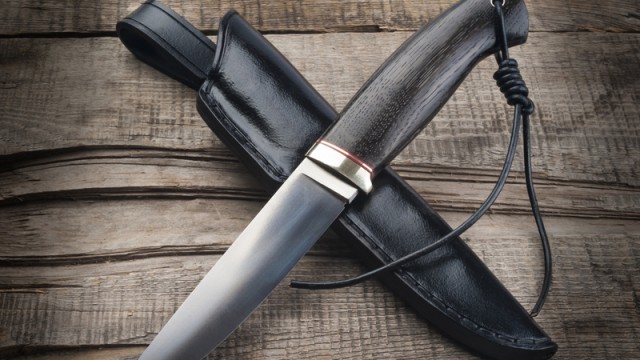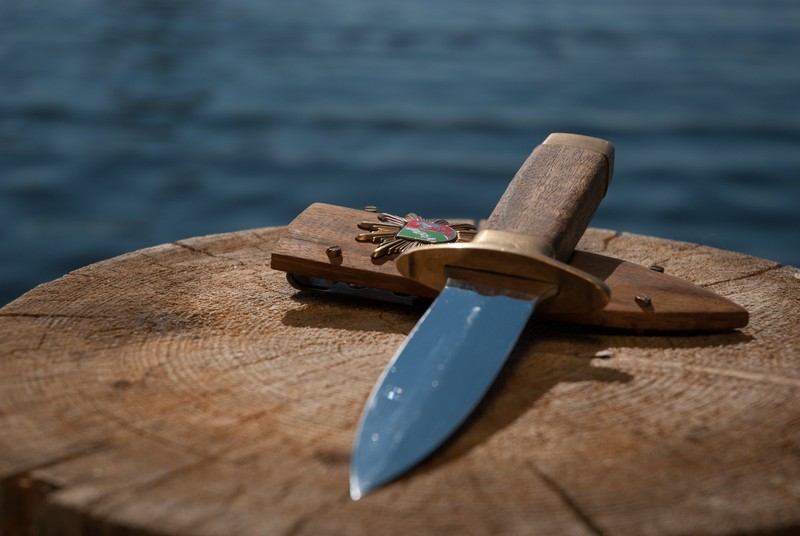Admit it, sometimes you can “hear” how great a knife is and why it's the only knife to invest in so many times that it becomes true in your mind. Since everything thinks the same thing that automatically means it must be correct, right? That's not entirely true…
Myth #4 – An ‘x' grind is the only type of knife you should use
Now when people say this and mean it’s always best for them, that’s one thing. But when people start claiming that “X” grind is always best for anyone, in all situations, something is quite wrong about their statement.

Debunking the Myth:
It's true that grinds are excellent knives and help us perform tasks well, but this does not mean that an “x” grind is suitable for everyone.
But I also have to admit that, objectively speaking, all grinds can (and do) excel at specific tasks over other grinds. That being said, a knife with a hollow grind will take a razor edge far easier than any other grind (as a general rule). The primary grind is usually much thinner, and as such, when it comes to putting on the final edge, that edge is much leaner than the edge on a stereotypical scandi grind or convex grind. The thinner edge makes initial cuts easier, due to lack of wedging. Once the edge ends, a hollow grind will tend to form a T-type of wedge, which for me, is frustrating when cutting things like potatoes and thick cardboard.
Don't ever go off of someone's opinion as to what knife you should buy. It's up to you to decide what type of knives you need and what you will be using it the most for. If you want a knife to put in your bug out bag it may need to be smaller, but still durable.
Debunk more myths about knives on More Than Just Surviving and always remember to question “truths” before buying them!

I agree with you on that. I carried my kabar in iraq, and put it through hell. I’ve had the blade bend but not break and it took a lot to accomplish that. Sog’s i have numerous break on me.
Clickbait
I make knives and this guy authoring this and most of y’all HAVE NO CLUE about what you are saying. Most cheap non stainless knives, like most Kabars, ESEE, and 1095 and 1075 knives will break before they bend. They are made from the same steel as lawn mower blades. I like lawn mower blades on lawn mowers but would never wear one in a sheath. Like files they can be properly tempered but the factories do not usually temper them properly. It is not hardness but proper tempering that seperates junk, like most Kabars and ESEEs, Beckers and so forth from quality blades. Some of the most ” life ” dependable blades are the cheaper brands like Mora and the Scandanavian brands that use a laminate steels. What about 85% of the mall ninjas think are good blades I wouldn’t carry to a weinie roast. Learn about steels before you offer an opinion. The 440 stainless blades of reputable manufacture are pretty unbeatable but so are other recipies if PROPERLY TEMPERED. Leave the hardness discussion to your prick but good blades properly tempered can be made from even grandpas broken files.
That was about the only thing he did get right. I have knives of just about all blade profiles, even sabre grind but to me I can adapt to blade profile but the proper temper is the true magic of blade science.
Dan Brown, is that rehandled, or a special edition, or what? The handle looks nice. I don’t usually care for Esee’s handle aesthetics, but I could go for something like that.
Tkc scales and grizzly out doors kydex sheath and thanks for asking
Dalton Mcdermott it’s been used a lot I have no clue what they used to coat the blade but it seems more durable than bedliner Esee also has a no questions warranty on all their products if you break it mail it to them and you get a new one no questions asked even if it was obviously intentional
Material has nothing to do with hardness? Um, the hardening process realigns the crystalline properties inherent in the material, so how can the basic material have no bearing on the hardness. Has this guy ever made a knife? He is a “collector” so I am assuming that means he watches the Knife Show and has a large collection of Frost and Ruko knives that just “look so cool.”
Kabars rock. Love Ontario knives as well.
Mack Proper temper is minuscule compared to proper hardening… For all your preaching about tempering as a knife maker, you seem to be forgetting the biggest concern is getting the carbon and carbides into solution and converting the austenite to martensite without causing grain growth or leaving yourself a bunch of left over austenite to worry about converting. Big grains and large amounts left over austenite from a bad heat treat aren’t fixed by tempering… While tempering can help the blades balance between toughness, wear resistance, and hardness; it’s a useless step if you didn’t properly anneal, stress relieve, and harden the steel first. Moreover before you go shooting your mouth off about “laminate steel” you should probably take a minute and google “San Mai steel or Damascus steel” it’s been used in knives way more often and for much longer than the steel from your pappy’s files…
On what planet are lawnmower blades made from 1095?!?! And when you’re referring to 440 do you mean 440A, 440B, or 440C?
I studied knife making under the best unknown knife maker in this country, Jim Mayes. In the late ’70s he wrote a book called ” How to Make Your Own Knives ” which to date has sold close to 100,000 copies. On Amazon today it lists for over $300.00 a copy in new condition. I studied under Jim for about 5 yrs and have expanded my knowledge and experience base well beyond his vast grasp on the totality of all things relating to blade science. 20 + years ago when I was training under Jim the 1065 to 1095 steels were not very well thought of as the basis for quality blades without out proper heat treating and tempering. Unlike older work hardened and tempered large circular and band saw blades lawn mower blades and leaf springs were the realm of hacks and Filipina knifemakers. The goomers who made fake Damascus outta cable were the only lower repute beaters than those already mentioned. I am now presently in the process of setting up a new shop on my own property and when I get it up and running I will be better able to address all knife making issues including major repairs.
The hardness of the blade is from that heat treat and not the type of steel the blade is made of. That’s just a load of bullshit. The composure of the steel has everything to do with its ability to achieve the desired heat treat, ie hardness.